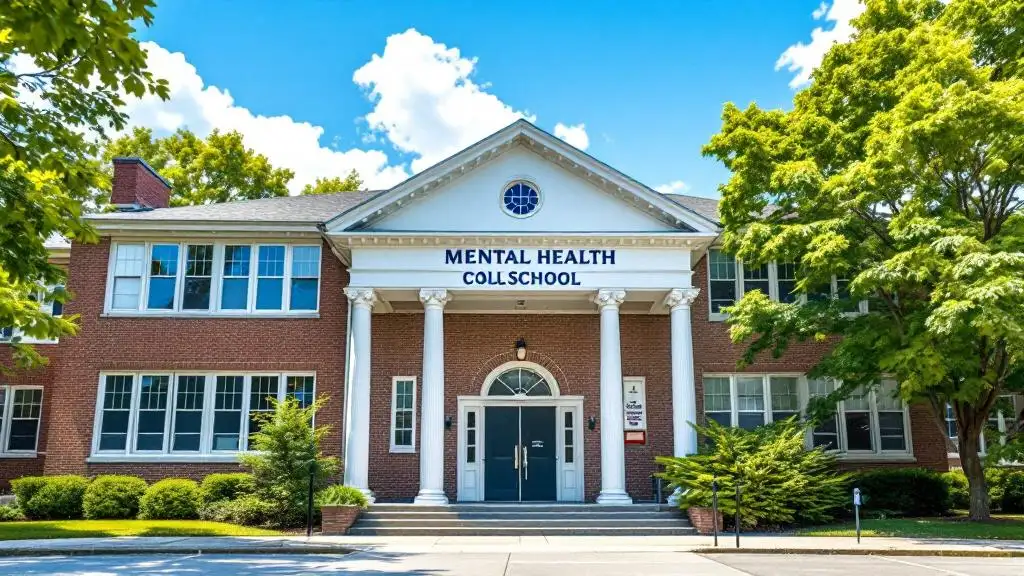Understanding the Growing Need for Mental Health Support in Schools
The mental health landscape for school-aged children and adolescents is experiencing a significant shift, marked by alarming increases in disorders like anxiety, depression, and behavioral issues. This surge underscores the critical need for early detection, comprehensive support systems, and community involvement to address the complex factors contributing to this crisis. As schools serve as pivotal access points for mental health services, understanding the scope, causes, and effective responses is essential for safeguarding the well-being and future of young people.
Scope and Statistics Highlight a Growing Crisis
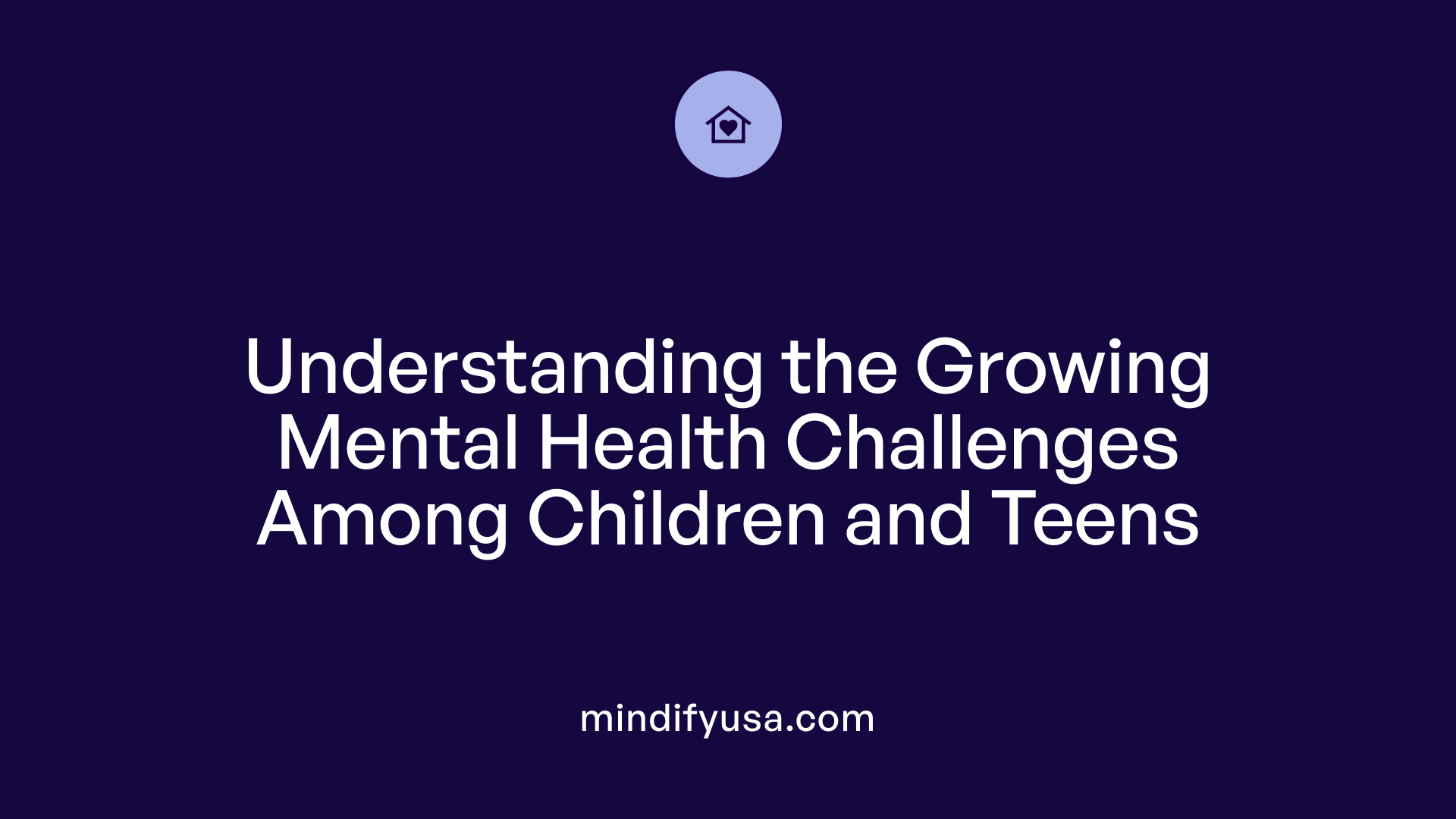
What is the current state of mental health among school-aged children and adolescents?
The mental health of school-aged children and adolescents has become a significant public health challenge, with alarming signs of increasing mental health issues in recent years. According to recent statistics, about 21% of children aged 3 to 17 are diagnosed with mental, emotional, or behavioral conditions. Among teenagers aged 12 to 17, approximately 20% experience symptoms of anxiety and depression currently, with higher percentages reporting feelings of sadness or hopelessness.
For instance, in 2023, 40% of high school students reported feeling persistently sad or hopeless, and around 20% seriously considered attempting suicide in the past year. These figures illustrate worsening mental health trends among youth. Since 2016, there has been a notable rise in diagnoses such as anxiety disorders and depression. The global impact is also evident, with mental health conditions like depression and anxiety ranking among the leading causes of disability and death in adolescents worldwide.
The escalation of these issues reflects a critical need for strengthened prevention, early detection, and tailored support strategies in schools, communities, and healthcare systems. The increase in mental health concerns calls for urgent action to address underlying causes and provide accessible care to mitigate long-term consequences.
How do mental health issues impact students’ academic and social lives?
Untreated mental health issues can significantly hinder a child's educational and social development. Students with unresolved emotional or behavioral disorders are at increased risk of repeating grades, truant behavior, and even dropping out of school. Mental health problems such as depression, anxiety, and behavioral challenges directly interfere with concentration, motivation, and the ability to engage effectively in classroom activities.
Research shows that children with mental health struggles often experience poor academic performance and social exclusion. These difficulties can impair peer relationships, reduce self-esteem, and lead to social withdrawal or disruptive behavior. Conversely, early mental health interventions, including counseling, social-emotional learning programs, and supportive classroom environments, have been shown to improve student engagement, reduce absenteeism, and promote positive social interactions.
Supporting mental well-being in schools not only benefits individual students but also creates a healthier, more inclusive educational environment, fostering resilience and academic success.
What recent trends and statistical data show increases in mental health problems?
Recent data indicates a troubling rise in mental health problems among children and adolescents. Emergency department visits related to mental health issues increased sharply during the COVID-19 pandemic, with children’s visits for deliberate self-harm rising by over 329% since 2007. Hospitalizations for suicidal ideation and attempts have more than doubled within the last decade.
In 2019, approximately 16.5% of children aged 3 to 17 reported mental health issues, with anxiety affecting 11% and depression 4%. These numbers have worsened over time; for example, in 2021, nearly 42% of high school students reported feeling sad or hopeless, and 18% actively attempted suicide.
The pandemic exacerbated these trends due to increased social isolation, family stress, and loss of loved ones. There has also been an observed rise in mental health conditions among younger children, including symptoms of suicidal ideation. Data highlights a continuous upward trajectory in mental health challenges, underscoring the need for effective prevention and intervention strategies.
| Year | Percentage of Students Feeling Sad or Hopeless | Percentage Considering or Attempting Suicide | Increase in ER Visits (Children 0-17) | Notable Trends |
|---|---|---|---|---|
| 2016 | Data not specified | Data not specified | Increase in ED visits for mental health | Rising mental health crisis among youth |
| 2019 | 16.5% of children diagnosed with mental health conditions | Data varies across studies | Data not specified | Growing prevalence of anxiety and depression |
| 2021 | Nearly 42% | 18% attempted suicide | Significant increase, nearly 40% higher than 2020 | Pandemic's impact on youth mental health |
| 2023 | 40% experienced feelings of sadness or hopelessness | 20% seriously considered attempting suicide | Data ongoing | Worsening mental health trends |
Why is prioritizing mental health support in schools essential?
Schools serve as critical access points for mental health support, especially for underserved communities. They are not only places for academic learning but also environments where early signs of mental health issues often first appear. Implementing mental health programs within schools facilitates early detection through screening tools and classroom observations, enabling timely intervention.
Research shows that integrating mental health support in education reduces stigma, increases access to care, and improves student outcomes. School-based mental health services—delivered by trained professionals such as counselors, school psychologists, and social workers—address a range of issues from anxiety and depression to behavioral problems.
Furthermore, supportive school environments, including positive relationships with teachers and peers and a safe climate, help children and adolescents develop resilience and social-emotional skills. With the rising mental health needs, expanding these supports is essential for promoting overall well-being and academic success.
Summary of Prevalence and Impact
| Population Group | Percentage with Mental, Emotional, or Behavioral Disorders | Common Disorders | Impact on Education | Recent Trends |
|---|---|---|---|---|
| Children 3-17 | 21% | Anxiety, depression, behavioral disorders | Increased dropout risk, poor academic performance | Rising diagnoses since 2016 |
| Adolescents 12-17 | 20% current symptoms of anxiety and depression | Anxiety, depression | Learning difficulties, social withdrawal | Escalating severity and prevalence |
| High School Students | 40% felt sad or hopeless in 2023 | Suicidal thoughts, attempts | Increased emergency visits, hospitalizations | Pandemic exacerbated mental health crisis |
Addressing these mental health challenges requires concerted efforts in policy, education, healthcare, and community support to ensure that all youth have access to timely, effective mental health care.
Contributing Factors to the Escalation of Youth Mental Health Challenges
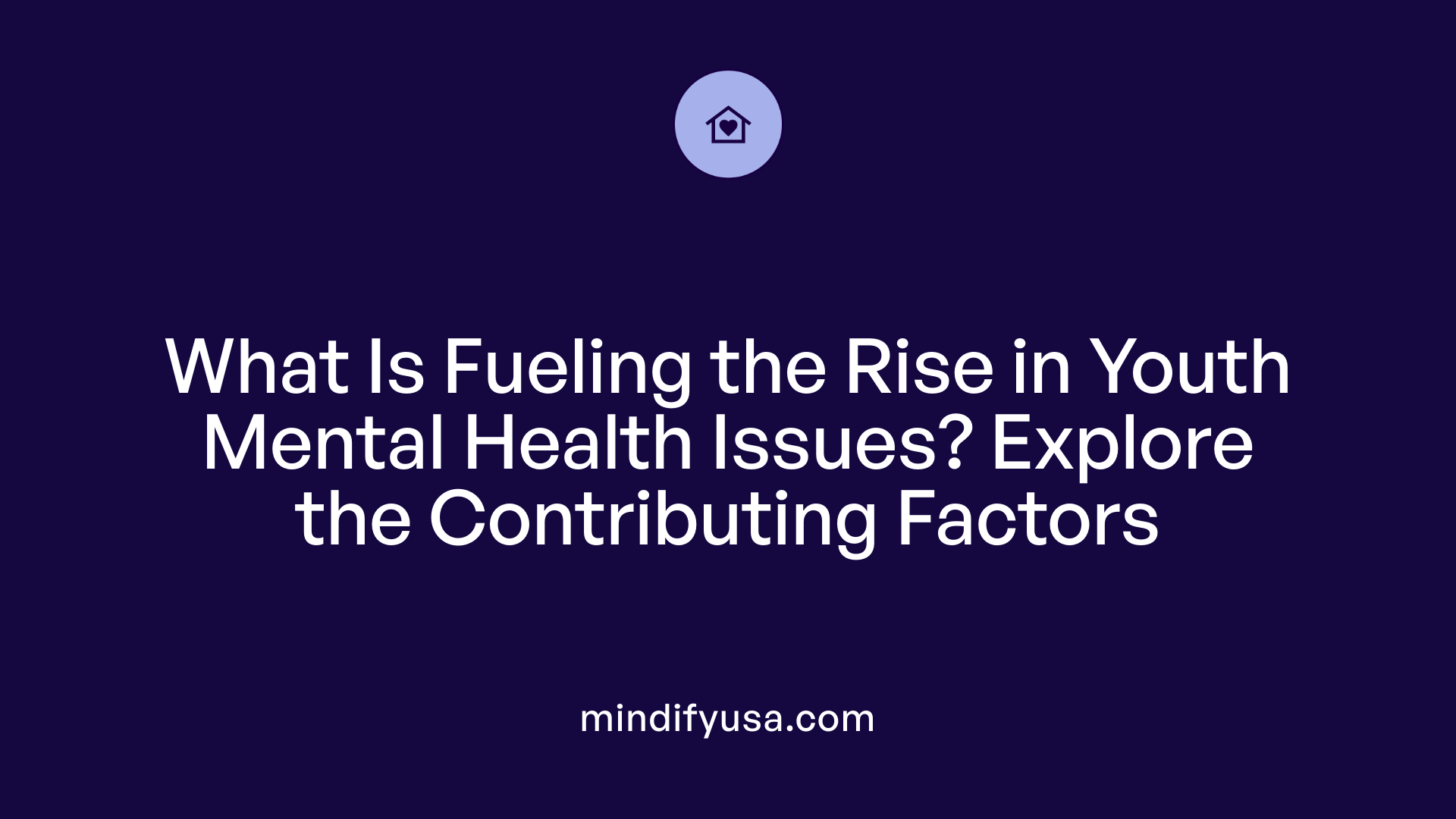
What factors contribute to the increase in mental health challenges in youth?
The rise in mental health issues among children and adolescents is multifaceted. One significant influence is social media, which exposes youth to cyberbullying, unrealistic beauty standards, and social comparison, contributing to feelings of inadequacy, anxiety, and depression.
Broader societal stressors such as climate change, social unrest, economic instability, and political upheavals also take a toll. These issues generate a sense of uncertainty and fear that can heighten emotional distress in young people.
The COVID-19 pandemic has profoundly intensified these challenges. Prolonged social isolation, remote learning, and family disruptions, including caregiver loss and unemployment, have created a breeding ground for mental health problems.
During this period, many youth experienced increased anxiety, depression, and suicidal thoughts. Emergency department visits for mental health concerns surged, revealing the depth of the crisis. Vulnerable groups, such as youth with disabilities and racial or ethnic minorities, faced higher risks of experiencing negative mental health outcomes.
Developmental factors also contribute. Early puberty and emotional regulation challenges make adolescents particularly susceptible to anxiety and mood disorders.
Socioeconomic disparities further deteriorate mental health. Families facing poverty, food insecurity, housing instability, or lack of access to quality healthcare show higher rates of untreated mental health issues.
Gender-based influences are evident, especially among girls and gender nonconforming youth who often encounter increased bullying, social pressure, and societal expectations, leading to elevated risks of mental health struggles.
In summary, the increase in youth mental health challenges results from a complex interplay of societal influences, pandemics, developmental changes, and structural vulnerabilities that require comprehensive approaches to address.
How has the COVID-19 pandemic affected youth mental health?
The COVID-19 pandemic has profoundly impacted young people's mental health. Nationwide, there has been a notable rise in depression, anxiety, and suicidal ideation among youth. Social isolation due to lockdowns limited face-to-face interactions with friends, teachers, and support systems, fostering feelings of loneliness and hopelessness.
Academic disruptions, such as school closures and remote learning, have caused stress and learning setbacks. For many, the lack of routine and in-person support increased anxiety and behavioral problems.
Family dynamics were also strained. Many children lost loved ones to COVID-19, leading to grief and trauma. Economic hardships, including job loss and housing insecurity, heightened family stress, which affected children's emotional well-being.
Vulnerable groups, including children with disabilities and minority populations, experienced even greater risks. Data shows that emergency mental health visits increased sharply during the pandemic, and mental health issues like self-harm and suicidal behaviors rose.
Long-term effects of these disruptions are still emerging but point towards a mental health crisis that, if unaddressed, may have lasting consequences for youth development, academic achievement, and overall well-being.
Impact of COVID-19 pandemic on mental health
The pandemic's impact on youth mental health is extensive. It has led to increased feelings of sadness, hopelessness, and suicidal thoughts, with data indicating a 40% rise in persistent emotional distress over the decade before the pandemic.
Emergency department visits related to mental health increased progressively, with recent months seeing a surge of nearly 40% higher than pre-pandemic numbers. Children and teens experienced heightened stress, social withdrawal, and loss of support networks.
The trauma is compounded for youth who experienced the death of a parent or primary caregiver due to COVID-19, increasing their risk for long-term emotional difficulties.
Furthermore, the pandemic exacerbated existing disparities, making it harder for vulnerable children—such as those from low-income families or minority backgrounds—to access mental health services.
In conclusion, COVID-19 has acted as a catalyst, worsening existing mental health problems and uncovering systemic gaps in support structures, demanding urgent and sustained interventions.
Challenges Schools Encounter in Addressing Growing Mental Health Needs
What challenges do schools face in addressing mental health needs among students?
Schools are on the front lines of supporting children’s mental health, but they encounter several significant obstacles. One primary challenge is resource and staffing shortages. Many schools lack enough trained mental health professionals, such as counselors, psychologists, and social workers. For example, most schools do not meet the recommended ratios of staff-to-students, restricting the availability and quality of services.
Stigma and low awareness also hinder students from seeking help. Despite increased efforts to educate about mental health, stigma remains a barrier, causing students to hide their symptoms or avoid asking for support. This prevents early detection and intervention.
Further complicating the issue is the fragmentation of service delivery systems. Mental health care for students is often delivered through separate agencies and programs, making coordination difficult. This disjointed approach impacts the continuity and effectiveness of support.
Funding and policy gaps represent another hurdle. Many schools rely on inconsistent funding sources, such as federal grants or local budgets, which are often insufficient to expand or sustain programs. Policy limitations and lack of comprehensive mental health strategies hamper nationwide efforts to implement universal screenings and multi-tiered support frameworks.
Disparities among student populations aggravate access issues. Children from marginalized communities—including those with disabilities, from low-income families, or from racial and ethnic minority groups—often face additional barriers. For instance, students in rural districts may have only one counselor for an entire school or district.
Addressing these challenges requires targeted investments, policy reforms, and innovative approaches. Expanding mental health workforce capacity, integrating services, reducing stigma through education, and collecting data to monitor progress are all vital steps to improve mental health support in schools.
What barriers hinder effective school mental health interventions?
Barriers to effective mental health interventions in schools include a shortage of qualified providers. Many schools do not have enough counselors, psychologists, or social workers to meet demand. Consequently, students may wait weeks or months for support, or receive minimal assistance.
Inadequate funding further limits program reach and quality. Schools often rely on short-term grants or district funds that cannot sustain long-term initiatives. Without consistent funding, schools struggle to provide universal access to mental health services.
Another obstacle is the lack of comprehensive training for educators and staff. Many teachers are not equipped to recognize early signs of mental health problems or respond appropriately, which delays intervention.
Stigma and poor mental health literacy among students and staff serve as additional barriers. Fear of judgment discourages students from seeking help and hampers open discussions around mental health.
Fragmentation of services in the community complicates care coordination. When mental health providers are not integrated with school efforts, students face delays or gaps in treatment. Disparities are especially pronounced in underserved and rural communities, where resources are scarcer.
Overall, overcoming these barriers demands strategic investments, policy adjustments, improved training, and a focus on reducing stigma—ensuring that support reaches all students who need it.
Strategies and Best Practices for Supporting Mental Health in Schools
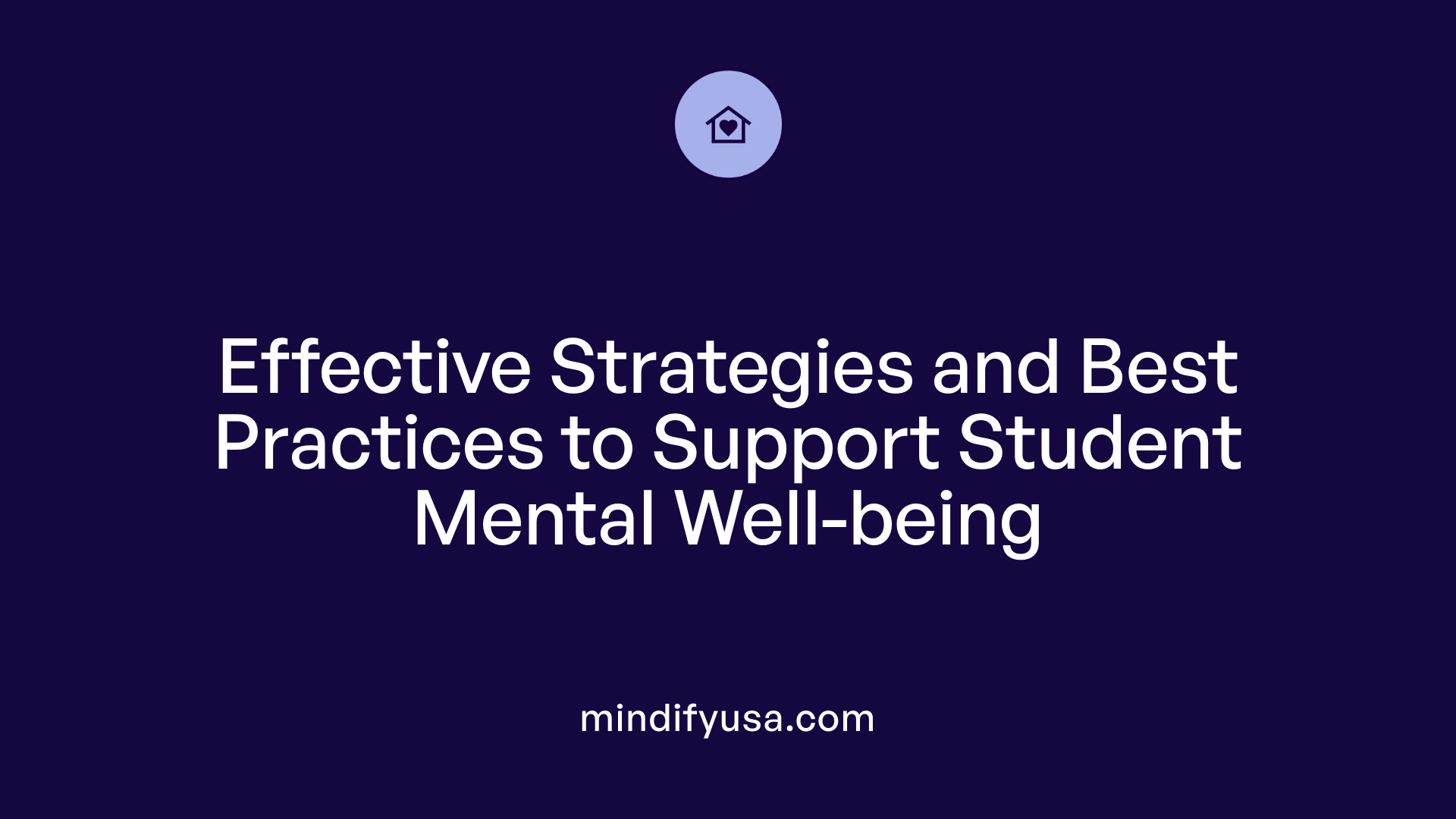
What strategies, policies, and best practices can support children's mental health in educational environments?
Supporting children's mental health within schools necessitates a broad, comprehensive approach. One fundamental element involves implementing evidence-based prevention and early intervention programs that aim to identify issues before they escalate. Universal screening tools like the Strengths and Difficulties Questionnaire (SDQ) enable early detection, allowing timely support.
Fostering a positive school climate is equally important. Schools that prioritize safety, connectedness, and respectful relationships create an environment where students feel valued and understood. Social-emotional learning (SEL) programs are integral to this, equipping students with skills to manage emotions, develop empathy, and resolve conflicts.
Another vital component is developing integrated frameworks that connect schools with families, community organizations, and mental health professionals. These partnerships facilitate a continuum of care, ensuring students receive appropriate services both in and outside school.
Reducing stigma around mental health through education and literacy campaigns encourages openness and helps students seek help when needed.
Building workforce capacity involves training staff, including teachers and administrators, to recognize signs of mental health problems and respond effectively. Policies that support hiring and retaining qualified mental health professionals on school premises, such as counselors and psychologists, are essential.
Leveraging data is crucial for informed decision-making. Data collection on student mental health trends informs program adjustments and resource allocation, ensuring that efforts meet evolving student needs.
Implementing these policies, alongside promoting an inclusive and supportive school environment, creates a robust system that supports student well-being and academic success. Collaboration across educators, families, and community partners ensures sustainability and effectiveness.
How can schools improve their mental health support systems?
Enhancing school mental health support involves establishing systematic screening procedures to catch problems early. Routine assessments, supported by clear protocols, help identify students who may benefit from additional services.
Professional development for staff on mental health literacy increases their ability to recognize signs of distress and provide appropriate support. Schools should foster an environment of open dialogue about mental health, where students feel safe to share their concerns.
Incorporating social-emotional learning curricula into daily lessons teaches coping skills, emotional regulation, and resilience. These programs have been shown to improve overall student well-being and reduce behavioral problems.
Investing in dedicated mental health roles, such as full-time school counselors and psychologists, expands access to professional support. Schools can also utilize telehealth platforms to connect students with outside providers, especially in rural or underserved areas.
Building strong partnerships with local mental health agencies ensures that students can be referred and linked to community-based services efficiently.
Utilizing technology for data management and monitoring progress helps tailor individual interventions and track outcomes over time.
Ultimately, a multi-tiered support system that emphasizes prevention, early detection, and timely intervention creates a resilient and adaptable mental health framework within educational settings.
The Role of Schools and Community Initiatives in Promoting Mental Well-being
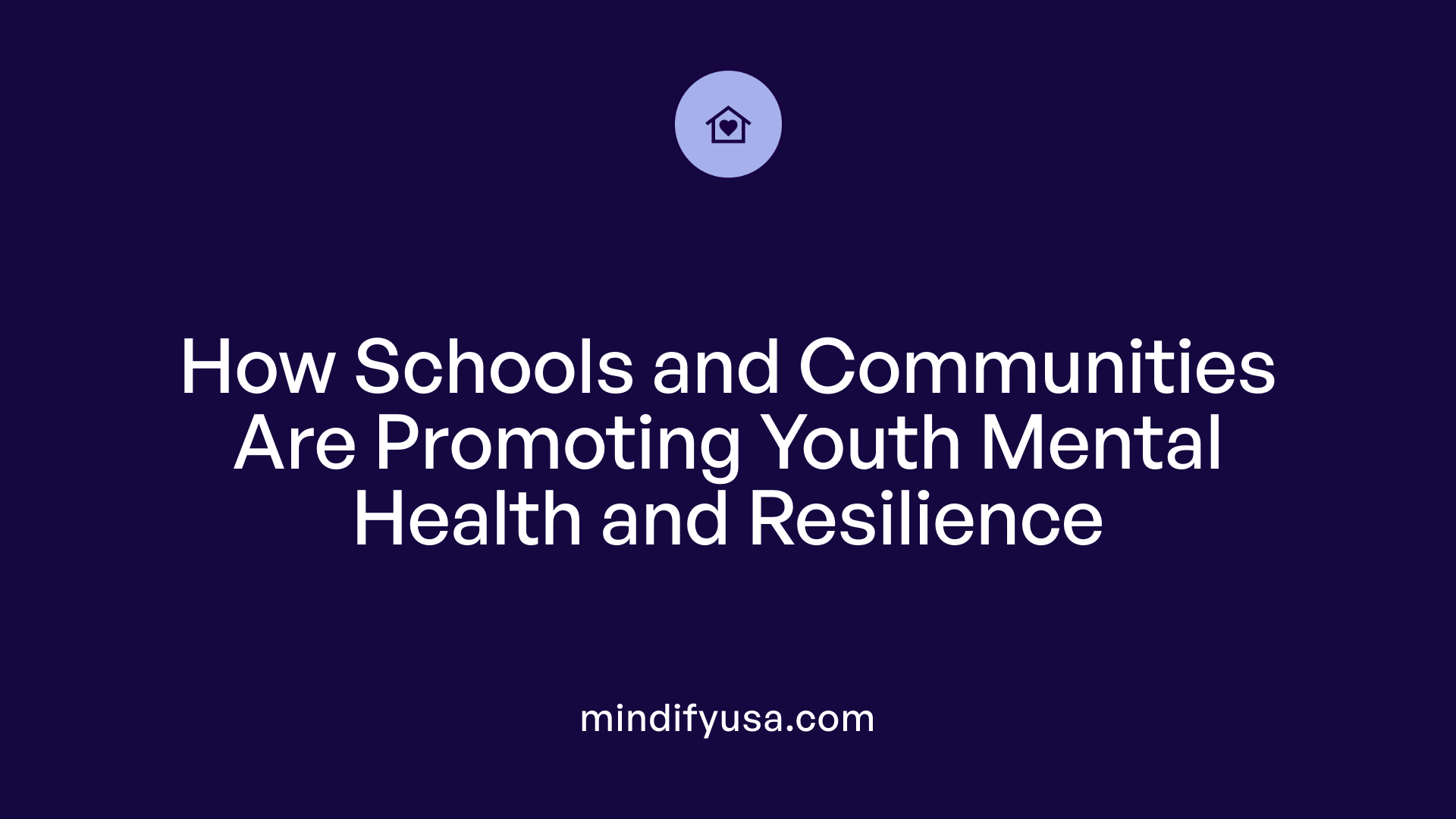
How can schools and community initiatives promote mental well-being among children?
Schools and community initiatives are vital avenues for fostering mental health in children and adolescents. One of their primary roles is integrating mental health education into school curricula. Programs that teach children to recognize and regulate their emotions early can improve their resilience and reduce the risk of developing serious mental health issues later on.
Providing accessible mental health services within schools is also essential. Schools often serve as the first point of contact for students experiencing emotional distress. Having counseling centers, safe spaces, and referral pathways to external providers ensures timely support. Evidence shows that early intervention can significantly improve outcomes, helping children stay engaged academically and develop healthier social relationships.
Creating a positive, inclusive school culture is another cornerstone. Schools that promote kindness, respect, and understanding help mitigate bullying and social exclusion, which are known to harm mental health. Encouraging parental engagement and community involvement also strengthens the support network around children, making mental health a shared priority.
In addition, implementing stress-reduction programs such as mindfulness, social-emotional learning (SEL), and resilience training directly impacts students' emotional well-being. These initiatives equip students with coping strategies that mitigate anxiety, depression, and behavioral problems.
Partnerships with community organizations are particularly effective in expanding mental health support. Collaborations with local health agencies, non-profits, faith-based organizations, and mental health professionals facilitate comprehensive services, especially in underserved areas. These partnerships can provide additional resources, conduct community awareness campaigns, and support crisis intervention.
Finally, training educators and school staff to recognize signs of mental health issues and reduce stigma around seeking help is crucial. Well-trained staff can identify early warning signs and guide students toward appropriate care. Overall, a coordinated approach involving education, accessible services, supportive culture, community collaboration, and staff training creates a nurturing environment where children can thrive both academically and emotionally.
Innovative Models and Approaches for School-Based Mental Health Services
What are effective models and approaches for integrating mental health services within schools?
Integrating mental health services in schools requires comprehensive and adaptable models that meet the diverse needs of students. One prominent approach is the implementation of multi-tiered systems of support (MTSS), which provides a layered framework of interventions. The first tier offers universal support through social-emotional learning (SEL) programs that promote resilience, emotional regulation, and positive behaviors for all students. Targeted interventions in the second tier address students at risk with small group or individualized support, while the third tier involves intensive, individualized care for students with severe needs.
Alongside MTSS, collaborative care models have gained prominence. These involve partnerships among educators, school psychologists, counselors, social workers, healthcare providers, and families. Such collaboration ensures coordinated efforts, shared decision-making, and sustained support, leading to better treatment outcomes.
In addition, culturally responsive and inclusive practices are critical to address the diverse cultural backgrounds of students. Programs designed with cultural awareness foster trust, reduce disparities in service access, and improve engagement among marginalized groups.
Program sustainability and continuous improvement hinge on strong stakeholder engagement, sustainable funding strategies, and continuous data collection and evaluation. Using data-driven methods enables schools to monitor program effectiveness, refine interventions, and adapt to changing student needs.
Overall, effective integration of mental health services in schools relies on a combination of evidence-based frameworks, collaborative partnerships, cultural competence, and ongoing evaluation.
How does technology support mental health services in schools?
Technology plays a vital role in expanding access, improving efficiency, and enhancing the quality of mental health services within educational settings. Telehealth platforms enable remote consultations between students and mental health professionals, overcoming geographic barriers especially in rural or underserved communities.
Digital screening tools and mental health apps provide accessible, confidential means for students to assess their emotional well-being and seek help when needed. These tools can be integrated with school data systems to facilitate early detection of mental health concerns and monitor student progress over time.
Electronic health records (EHRs) streamline care coordination among school staff and external providers, ensuring accurate documentation and communication. Furthermore, online platforms for staff training and parent engagement foster a culture of mental health literacy and proactive intervention.
Using digital communication tools supports timely and efficient collaboration among educators, health providers, and families, promoting a team-based approach to student well-being. Overall, technology enhances the reach, responsiveness, and personalization of mental health services in schools, making support more accessible and effective for all students.
Advocacy and Policy Initiatives to Address Youth Mental Health Crisis
What efforts and advocacy are underway to increase awareness and reduce stigma around youth mental health?
Numerous efforts and advocacy initiatives are actively underway to increase awareness and reduce stigma surrounding youth mental health. These initiatives focus on education, community engagement, and policy change.
One prominent approach involves integrating mental health education into school curricula, helping students understand mental health topics, recognize symptoms, and comfort seeking help without fear. Public campaigns such as Georgia’s #FreeYourFeels and Tennessee’s educational websites aim to normalize mental health conversations among youth, teachers, and parents.
Digital tools also play a vital role. Apps designed for mental health support, anonymous reporting platforms, and online peer support groups provide accessible avenues for young people to seek help discreetly and conveniently.
Organizations like NAMI (National Alliance on Mental Illness), Mental Health America, and Bring Change to Mind actively promote storytelling and community involvement. They work to challenge stereotypes, foster understanding, and encourage open dialogue about mental health issues.
Youth participation in advocacy is crucial. Youth councils, grassroots movements, and peer-led programs ensure that mental health campaigns are relevant and resonate across diverse communities. These efforts collectively contribute to creating supportive environments, reducing stigma, and encouraging help-seeking behavior among youth.
Overall, the combination of educational initiatives, digital platforms, community engagement, and policy advocacy aims to normalize mental health discussions, make support more accessible, and promote healthier attitudes toward mental well-being.
How are policies shaping school mental health services?
Policy development at both federal and state levels is playing an increasingly significant role in shaping and expanding school mental health services. Recognizing the critical need for early intervention, recent legislative measures allocate resources, set standards, and promote best practices.
The Bipartisan Safer Communities Act and the American Rescue Plan Act are notable examples. These laws provide funding to expand school-based mental health programs, including grants to hire or train mental health professionals like counselors, school psychologists, and social workers. They also encourage the adoption of trauma-informed care and mental health literacy initiatives.
States have enacted laws supporting mental health awareness, suicide prevention, and ensuring equitable access, especially for marginalized groups such as children of color, LGBTQ+ youth, and students with disabilities. Some policies mandate mental health screenings, include mental health education in health curricula, and facilitate partnerships between schools and community mental health providers.
Despite these advances, challenges remain. Many schools face difficulties with inconsistent implementation, insufficient funding, and shortages of qualified personnel. These hurdles highlight the necessity for sustained advocacy to refine policies, secure stable funding, and ensure their effective application across diverse educational settings.
As a result, policy efforts are crucial in establishing a comprehensive, integrated approach to mental health in schools, but sustained commitment and strategic action are necessary to meet the increasing demand adequately.
| Policy Focus Area | Examples | Impact | Challenges |
|---|---|---|---|
| Funding for mental health professionals | Grants via Bipartisan Safer Communities Act | Expanded access to providers | Shortage of qualified staff |
| Mental health curricula | State laws on mental health education | Increased awareness | Inconsistent implementation |
| Suicide prevention | State mandates for prevention programs | Reduced suicide rates | Funding and resource constraints |
| Equity in access | Policies targeting marginalized groups | Fairer access to services | Structural inequalities |
Understanding the evolving policy landscape is vital for advocates, educators, and health professionals committed to improving mental health support systems for youth. Continued advocacy and refinement of policies can help bridge gaps, broaden access, and foster healthier developmental environments.
Building a Collective Response to a Critical Issue
Addressing the rising mental health needs among school-aged children requires a coordinated, multifaceted approach involving policymakers, educators, health professionals, families, and communities. By investing in evidence-based programs, expanding access to services, reducing stigma, and fostering safe, inclusive environments, society can support youth in overcoming mental health challenges. Early detection, continuous support, and community partnerships are essential to ensuring that all children have the opportunity to thrive academically, socially, and emotionally. The collective effort to prioritize and improve mental health systems today will pave the way for healthier, more resilient generations tomorrow.
References
- Mental Health in Schools | National Alliance on Mental Illness (NAMI)
- Data and Statistics on Children's Mental Health - CDC
- [PDF] Supporting Child and Student Social, Emotional, Behavioral, and ...
- Mental Health Problems in a School Setting in Children and ...
- Promoting Mental Health and Well-Being in Schools - CDC
- CHILD AND ADOLESCENT MENTAL HEALTH - NCBI
- Mental health of adolescents - World Health Organization (WHO)
- Kids' mental health is in crisis. Here's what psychologists are doing ...












